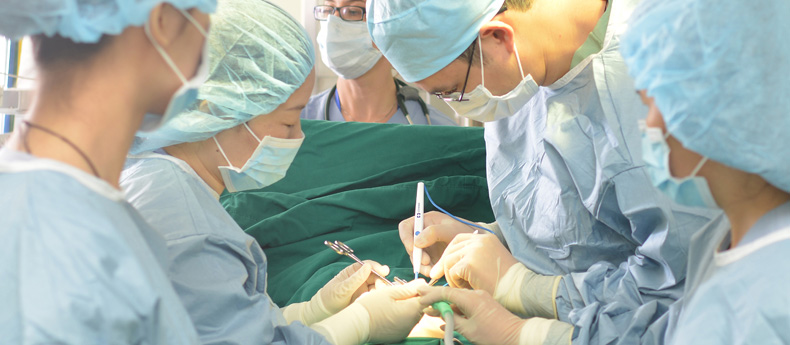
Gallstones: Symptoms, Prognosis, Prevalence, and More
What are gallstones and where do they come from?
The gallbladder is a small, pear-shaped organ on the upper right of the abdomen just beneath the liver. It contains a digestive fluid called bile that can be released into the duodenum to aid in food digestion. Gallstones are hardened deposits that form in the gallbladder under pathogenic conditions. Some people may develop just one stone while others may develop many stones at the same time. Some people have stones as small as grains of sand while others have stones as bigas ping-pong balls. Some stones are as brittle as chalk, while others are hard as rocks. Generally, gallstones are classified into three types. Cholesterol stones vary from light yellow to dark green or brown, each often having a tiny, dark central spot. They contain at least 80% cholesterol, which makes them hard. Pigment stones are usually small, dark, and brittle which contain less than 20% cholesterol. Mixed stones typically contain 20 to 80% cholesterol, usually with a brown color.[1]
What complications can result from gallstones?
Gallstones can cause various complications depending on what region they affect:
- Inflammation of the gallbladder: Gallstones lodged in the gallbladder or fixed in the neck of the gallbladder can lead to inflammation of the gallbladder (cholecystitis). Abdominal pain, from mild to severe, and fever may develop depending on the severity of the inflammation.
- Blockage of the common bile duct: Gallstones can migrate into the common bile duct through the cystic duct. Jaundice, chills and fever, and abdominal pain will result if gallstones move and result in blockage anywhere along the common bile duct. Serious illness, as well as death, can occur under severe conditions.
- Acute pancreatitis: The pancreatic duct and the common bile duct join to form a common channel into the duodenum. Gallstones lodged at the distal end of the common bile duct or the common channel can cause blockage of the pancreatic duct which can lead to inflammation of the pancreas (acute pancreatitis). Acute pancreatitis will cause intense, constant abdominal pain and other severe health consequences.
- Gallbladder cancer: A long history of gallstones can increase the risk of malignancy of the gallbladder, which has a poor prognosis.
How common are gallstones and what factors increase the risk of gallstones?
Gallstones are approximately two times more common in females than in males. According to the data available, 10% of the general population in China has gallstones.[2] There seems to be a strong genetic component to gallstone occurrence. The prevalence of gallstones increases with age. Obesity is a well-known risk factor, though rapid weight loss as a result of dieting is also associated with gallstones. Pregnancy and diabetes mellitus are also believed to be risk factors for gallstone development.[2]
How do you know if you have gallstones?
Greater than 70% of people with gallstones are asymptomatic and their gallstones are found incidentally via ultrasound or other imaging tests. People who experience sudden pain from gallstones will feel rapidly intensifying pain in the upper right portion or the center of the abdomen just below the sternum. In addition, back pain between the shoulder blades or in the right shoulder may occur.[3] Gallstone pain may last several minutes to a few hours. Yellowing of the skin and whites of the eyes, as well as fever, sometimes also occurs.
How can the surgical team at Shanghai United Family Hospital help with your gallstones?
Medicine can be given to control gallstones with close monitoring and follow-up. Most of the time, surgery is not needed unless symptoms are present. In general, patients that have symptoms will need surgery sooner or later.[4] Laparoscopic or single–port laparoscopic removal of the gallbladder with stones is the gold standard and is now used universally. These procedures use only small surgical cuts, which allow for a faster recovery. Patients usually can return home from the hospital within one day after surgery. The procedure of gallbladder-preserving stone extraction is not well-accepted among surgeons, and the high recurrence of gallstones makes the procedure’s desirability debatable. Other procedures, such as open surgery, endoscopic retrograde cholangiopancreatography (ERCP) and laparoscopic common bile duct exploration are also available.[5]
References:
- Warttig S, Ward S, Rogers G, Guideline Development Group. Diagnosis and management of gallstone disease: summary of NICE guidance. BMJ 2014; 349:g6241.
- Zeng Q, He Y, Qiang DC, Wu LX. Prevalence and epidemiological pattern of gallstones in urban residents in China. Eur J Gastroenterol Hepatol 2012; 24:1459.
- Benarroch-Gampel J, Boyd CA, Sheffield KM, et al. Overuse of CT in patients with complicated gallstone disease. J Am Coll Surg 2011; 213:524.
- Reiss R, Nudelman I, Gutman C, Deutsch AA. Changing trends in surgery for acute cholecystitis. World J Surg 1990; 14:567.
- Zakko SF, Srb S, Ramsby GR. Sensitivity of percutaneous endoscopy compared with ultrasonography in the detection of residue or mucosal lesions after topical gallbladder stone dissolution. Gastrointest Endosc 1995; 42:434.
Copyright United Family Healthcare 2018 All right reserved ICP 京ICP备13017554号-4



